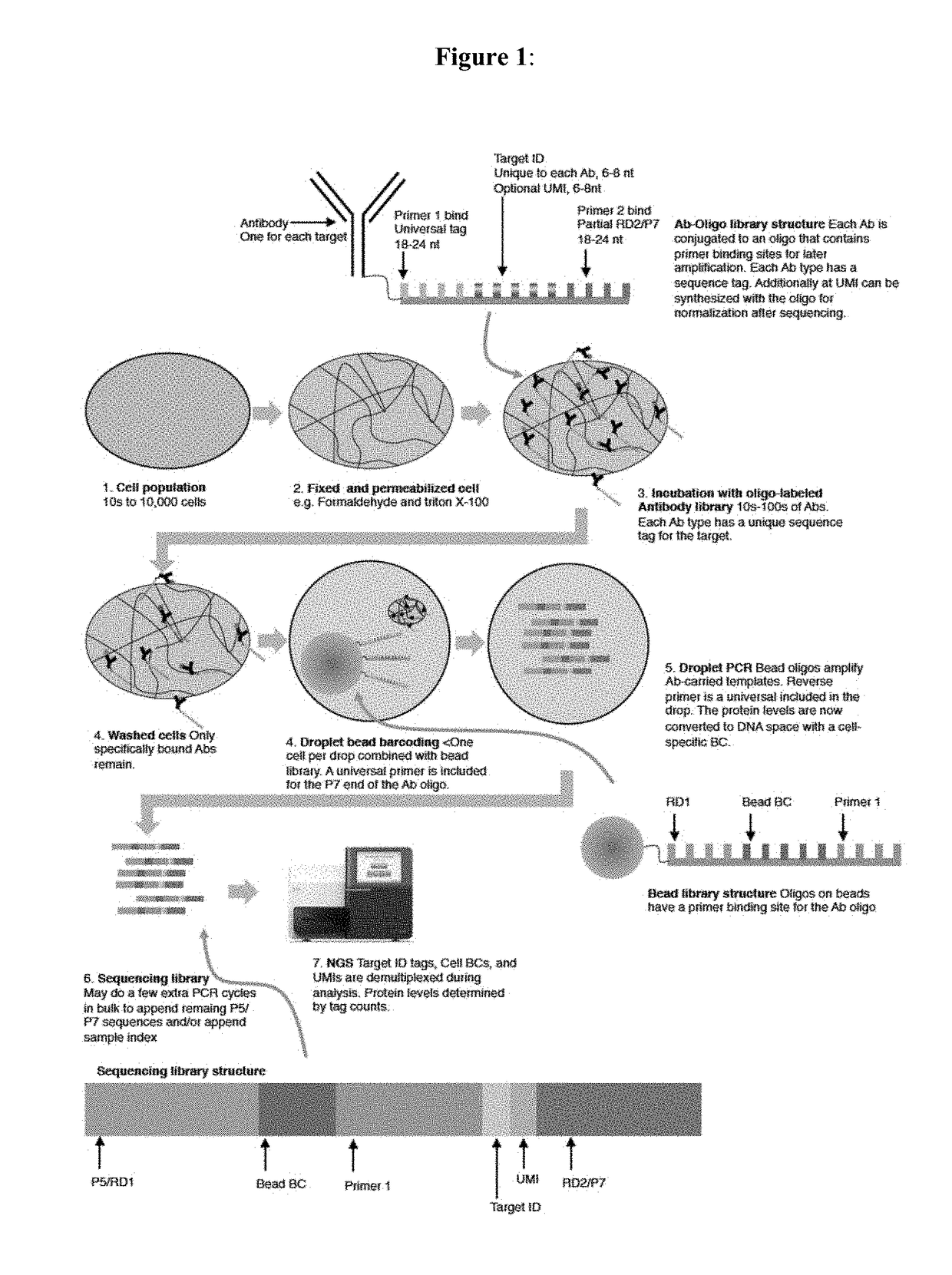Digital protein quantification
a protein and digital technology, applied in the field of digital protein quantification, can solve the problems of the quantitative analysis of other biological components such as proteins has proved much more difficult, and methods such as facs, elisa, and bead-based multiplexing are limited by lack of sensitivity, sample throughput, and the number of markers. to work, and methods such as mass cytometry require expensive and specialized heavy atom
- Summary
- Abstract
- Description
- Claims
- Application Information
AI Technical Summary
Benefits of technology
Problems solved by technology
Method used
Image
Examples
Embodiment Construction
I. Overview
[0036]Described herein are compositions, methods, and kits for performing quantitative analysis of target biological components. The compositions, methods, and kits described herein can be used to determine the level of a plurality target biological components of a plurality of cells at single-cell resolution. The compositions, methods, and kits described herein are based on the principal that the level of a target biological component can be encoded into an oligonucleotide. The oligonucleotide to be encoded is conjugated to a binding element specific for that target biological component. The conjugated oligonucleotide includes a target ID sequence that corresponds to the target biological component. The encoding can be performed by a binding event between the target biological component and the binding element. Detection of the target ID sequence of the encoded oligonucleotide detects the target biological component, if present. High throughput sequencing of a plurality ...
PUM
| Property | Measurement | Unit |
|---|---|---|
| temperature | aaaaa | aaaaa |
| temperature | aaaaa | aaaaa |
| temperature | aaaaa | aaaaa |
Abstract
Description
Claims
Application Information
 Login to View More
Login to View More - R&D
- Intellectual Property
- Life Sciences
- Materials
- Tech Scout
- Unparalleled Data Quality
- Higher Quality Content
- 60% Fewer Hallucinations
Browse by: Latest US Patents, China's latest patents, Technical Efficacy Thesaurus, Application Domain, Technology Topic, Popular Technical Reports.
© 2025 PatSnap. All rights reserved.Legal|Privacy policy|Modern Slavery Act Transparency Statement|Sitemap|About US| Contact US: help@patsnap.com

